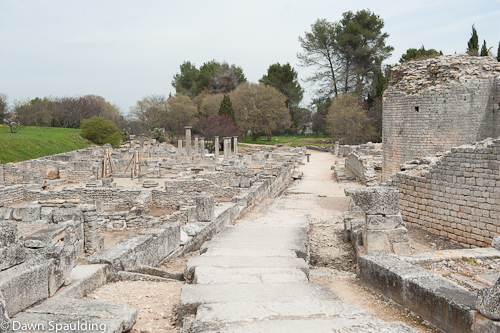
Walking down the main street toward the sacred spring makes it easy to imagine the once-thriving city.
I had no idea how amazing the ruins of the ancient city Glanum would be. I almost skipped it, figuring I’ve had my fill of destroyed buildings, but I’m glad I didn’t since this is one of the most well-preserved and impressively designed ancient city I’ve seen (this may not be saying much since most ruins I’ve seen have been limited to Europe, but it is known as France’s most impressive ancient settlement).
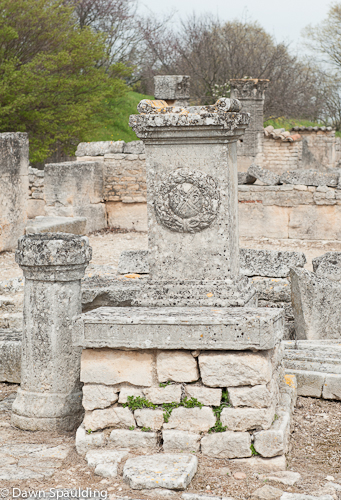
Monument remains
Walking through Glanum, it’s easy to imagine the city back in the day. Not only are all streets, building footprints and canals firmly in place, but it’s ancient urban planning at its most efficient: there is a freshwater canal to bring potable water to the residents and a sewage to bring wastewater the opposite direction.
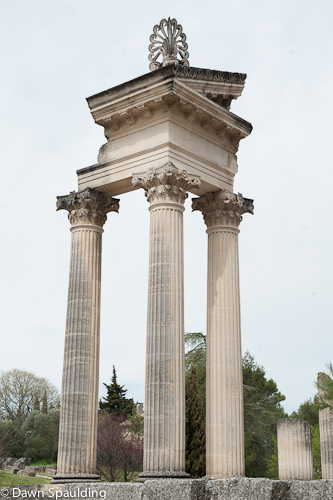
One of two twin temples built to honor the emperor’s family
You think Glanum looks pretty good for its age? Well, it is exceptionally well-preserved since it was covered for centuries by alluvial mud, which over time slid down from the nearby Alpilles, a small chain of Provençal mountains. This isn’t really surprising since the town was originally carved out of alluvial deposits. The town was excavated in 1921.
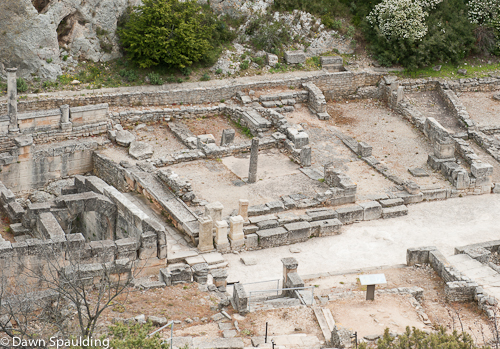
The magical spring (left) that started it all
So who were the first inhabitants? Celts settled here in the 6th century B.C., attracted by the ample limestone quarries and water from the nearby spring. The water was believed to have healing powers, thanks to Celtic god Glan and his companions, the Glanic Mothers, who inhabited the waters. Monuments and temples were built around the sacred spring in the 2nd century B.C.
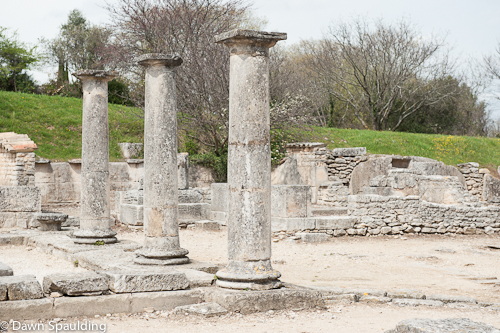
Remains of a typical Mediterranean house with rooms laid out around a courtyard and pool.
After the initial construction, the city went through two booms. The first was in the 2nd century B.C., when the Celts’ close relations with the Greeks turned prosperous. The second was when Glanum became a Roman colony in the years of Augustus’ reign (63 B.C. – 14 A.D.).
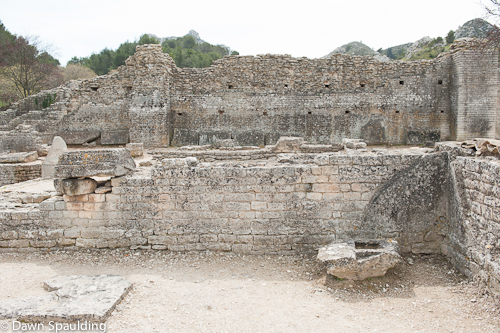
Thermal baths, from 75 B.C., served as the center of social life.
In 260 A.D., Glanum was invaded by the Germanic Alamanni (an ancient tribe who generally inhabited parts of Switzerland and the Alsace region) and abandoned.
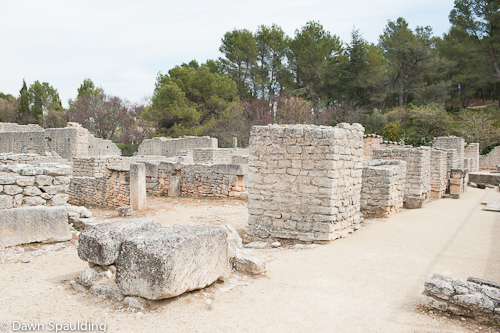
Most of the basilica’s 24 square foundation pillars are still in place.
Open daily except Mondays in autumn and winter.
Rte des Baux-de-Provence (about five minutes outside of St-Rémy’s city center)
No comments yet.